To The Huntington At Christmas... A Members Only Event



We sipped sparkling wine and hot cider while enjoying a festive shopping experience and supporting The Huntington. ?There was a tempting array of goodies such as books, games, toys, holiday plants, and fresh-baked holiday treats. We immediately headed to the dessert garden...
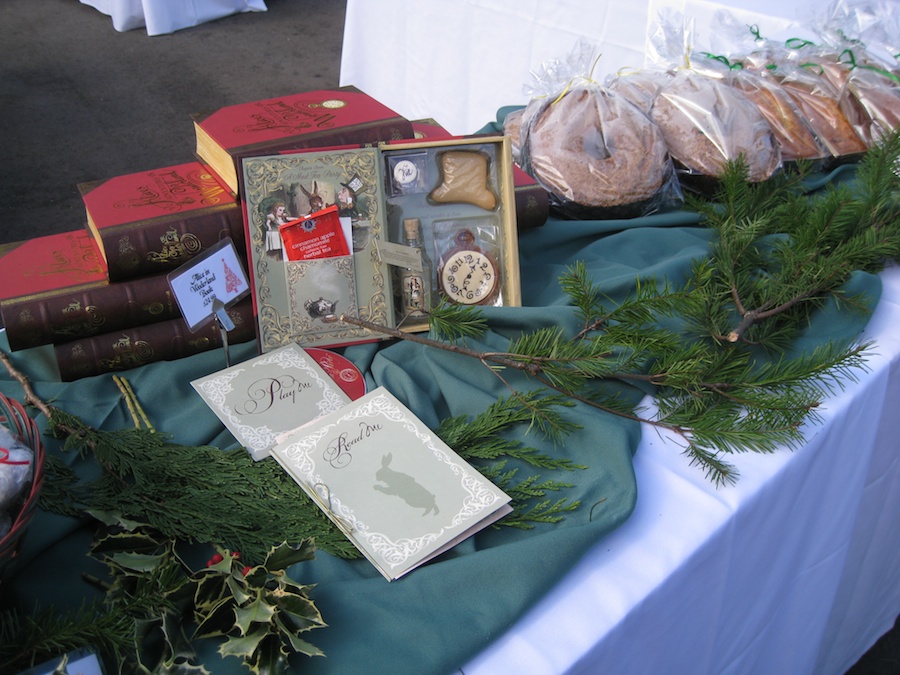
Goodies for sale

We are ready to go inside after our champagne
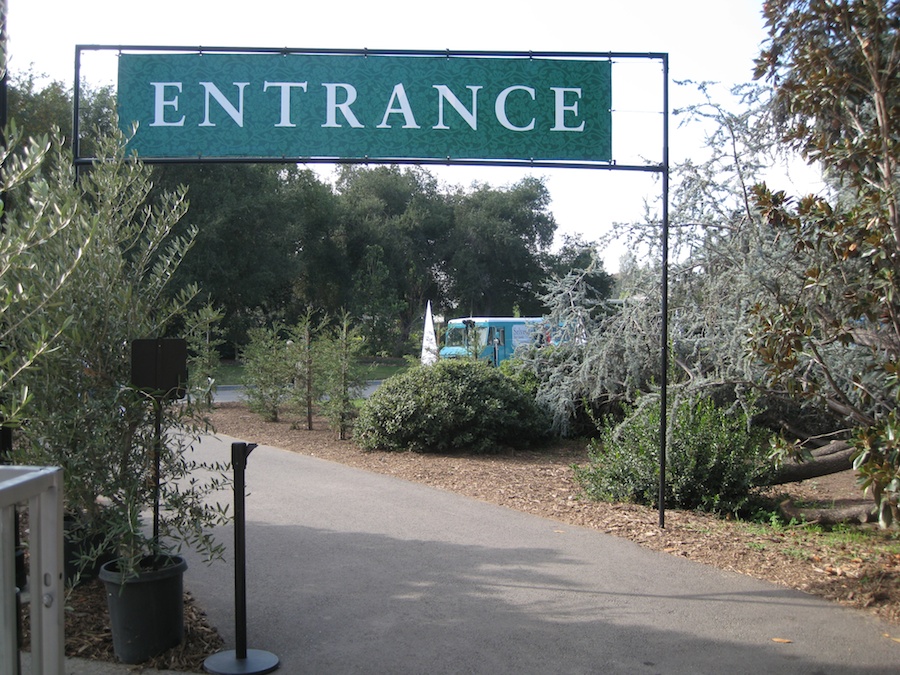
We are entering....
To The Dessert Garden
Did You Know? - The Huntington Desert Garden is part of The Huntington Library, Art Collections and Botanical Gardens in San Marino, California. The Desert Garden is one of the world's largest and oldest collections of cacti, succulents and other desert plants, collected from throughout the world.
It contains plants from extreme environments, many of which were acquired by Henry E. Huntington and William Hertrich (the first garden curator) in trips taken to several countries in North, Central and South America.
One of the Huntington's most botanically important gardens, the Desert Garden brought together a group of plants largely unknown and unappreciated in the beginning of the 1900s.
Containing a broad category of xerophytes (aridity-adapted plants), the Desert Garden grew to preeminence and remains today among the world's finest, with more than 5,000 species in the 10 acre (4 ha) garden.

Christmas colors in the garden

It was a magnificent day in California

Blossom time

We were by ourselves
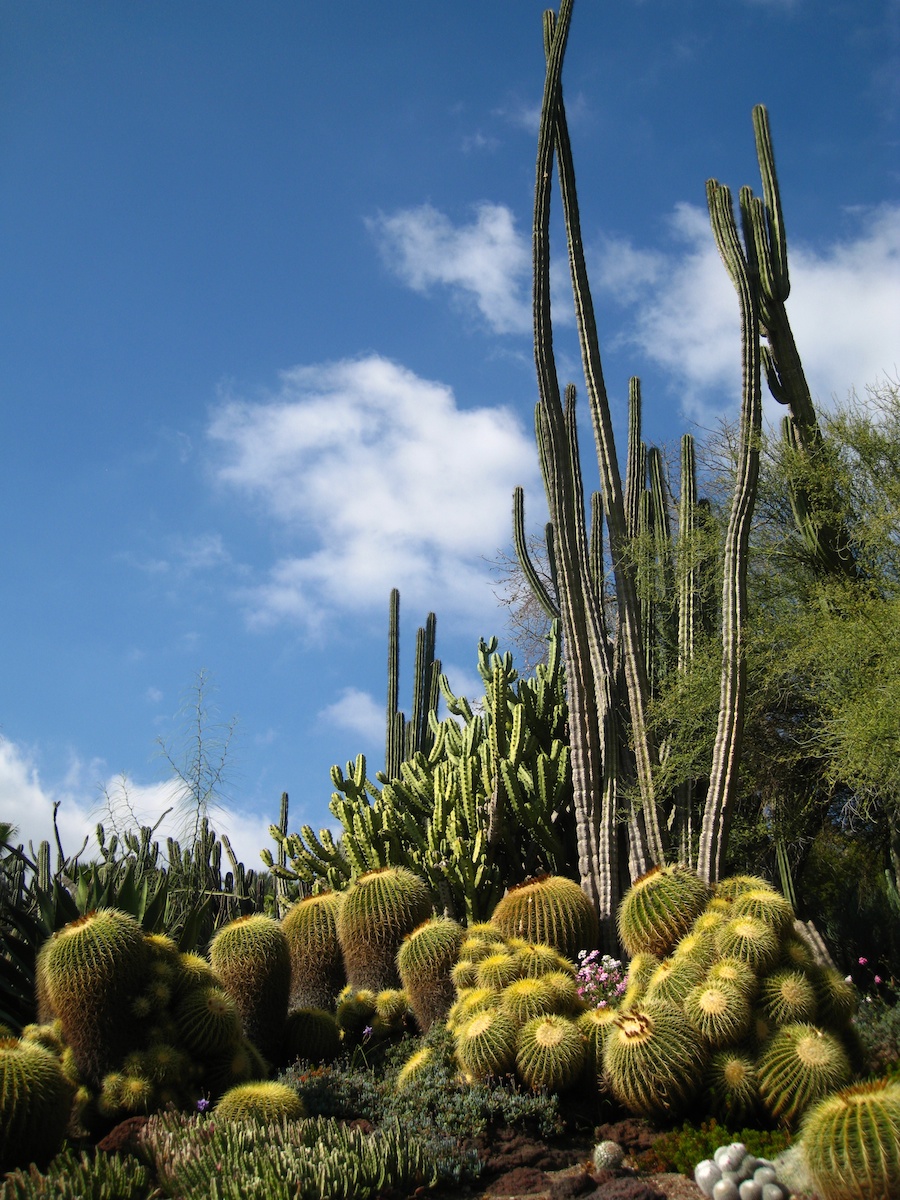
The cacti were in their full glory
Did You Know? - A group of mature Golden Barrels (Echinocactus grusonii) showing their distinctive clustering habit. The Golden Barrel collection at the Huntington may be the finest in the world.
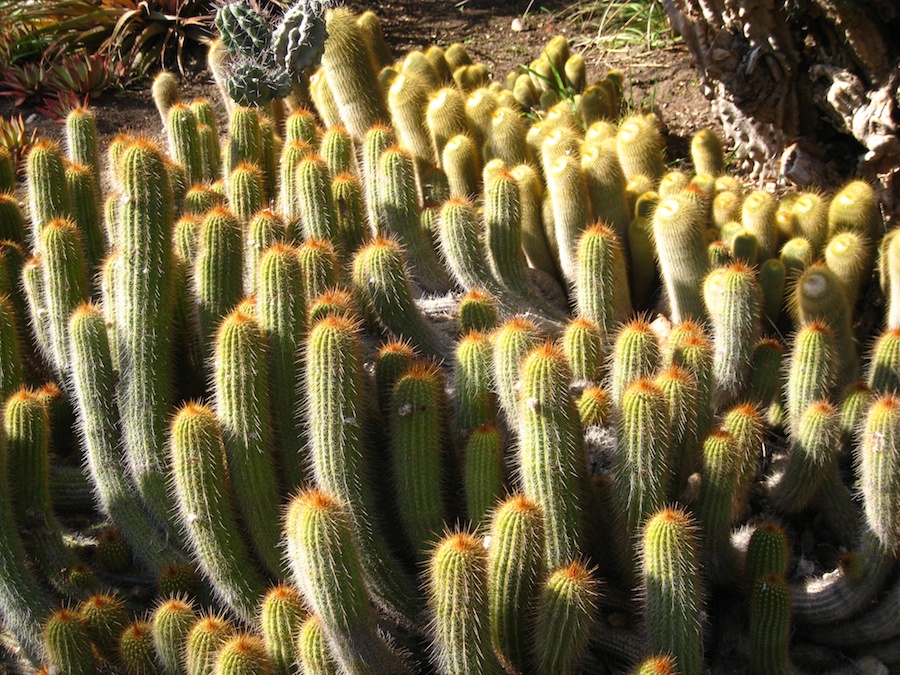
Do not fall into this pile of cacti

Sue thought it looked like a bouquet
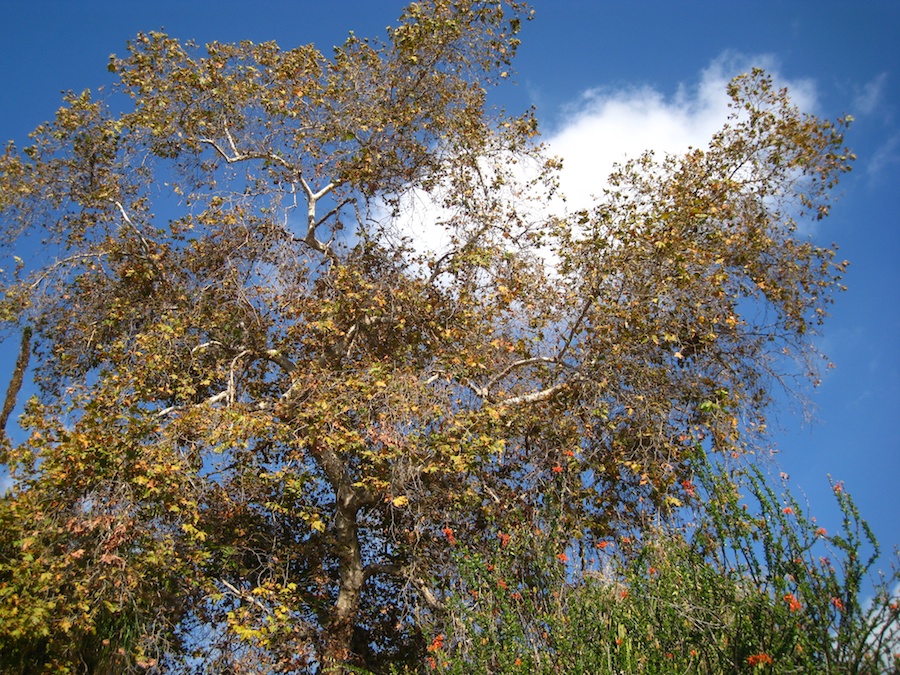
The cloud was trying to hide

The gardeners were busy with trimming

Or was Sue doing the trimming???

Greens and blues.... Magnificent spectacle
To Australia We Go

We are so confused
Did You Know? - Australia's long (60 million years) isolation from other land masses has allowed development of a unique flora and fauna. Vascular plants are currently estimated at 18,000 to 20,000 taxa with an eventual 25,000 expected once the flora is completely surveyed and described. Ancient geology has resulted in a mosaic of soil types, allowing a large diversity of species to occur in small localized areas. The majority of plants are pollinated by vertebrates rather than insects.
Australian climate and vegetation ranges from desert to rainforest to alpine, though the millions of years of weathering have left a relatively flat topography, with the tallest mountain, Mt. Kosciusko, only 7316 feet tall. Southwestern Australia and the southwestern area of South Australia into western Victoria is one of the five Mediterranean climate regions of the world (the others being California, central Chile, the Cape Province of South Africa, and the Mediterranean Basin).
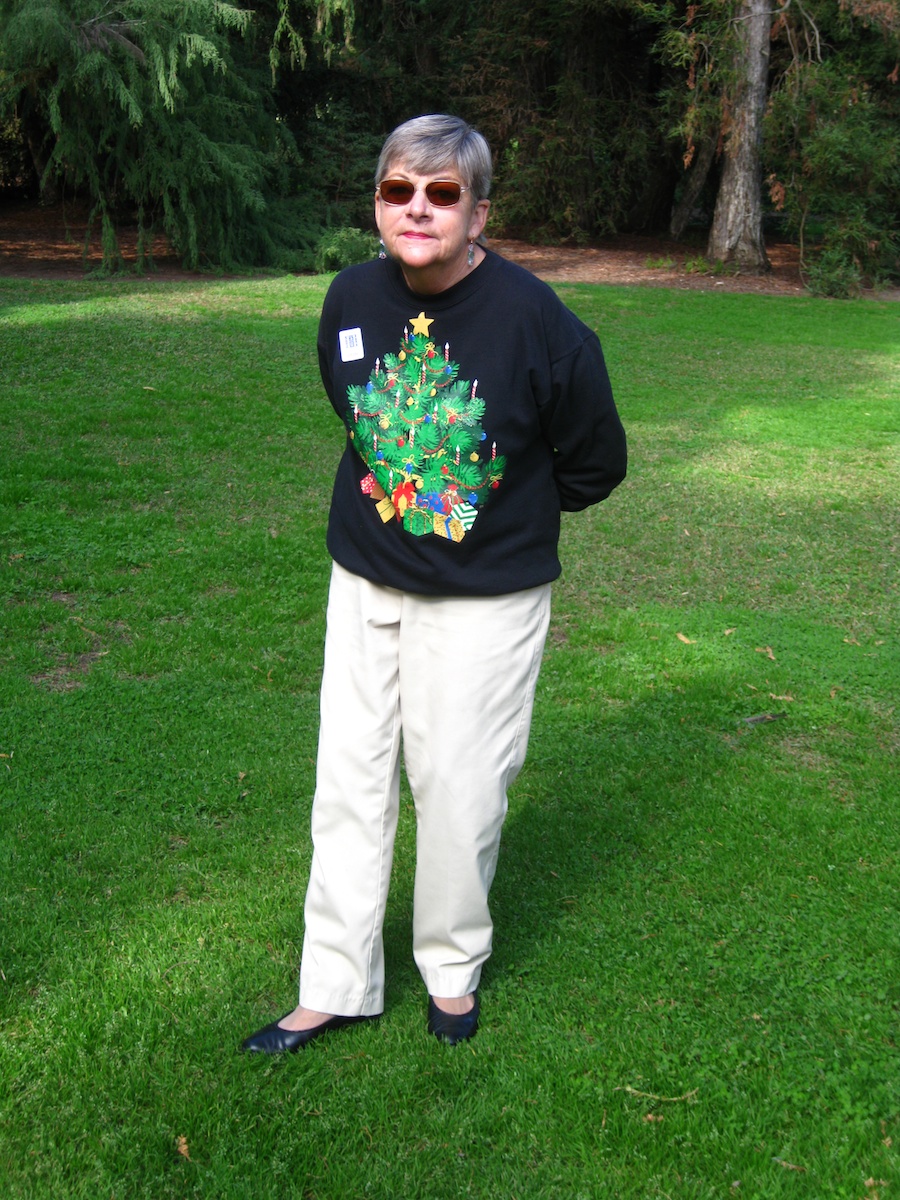
We went off-roading...
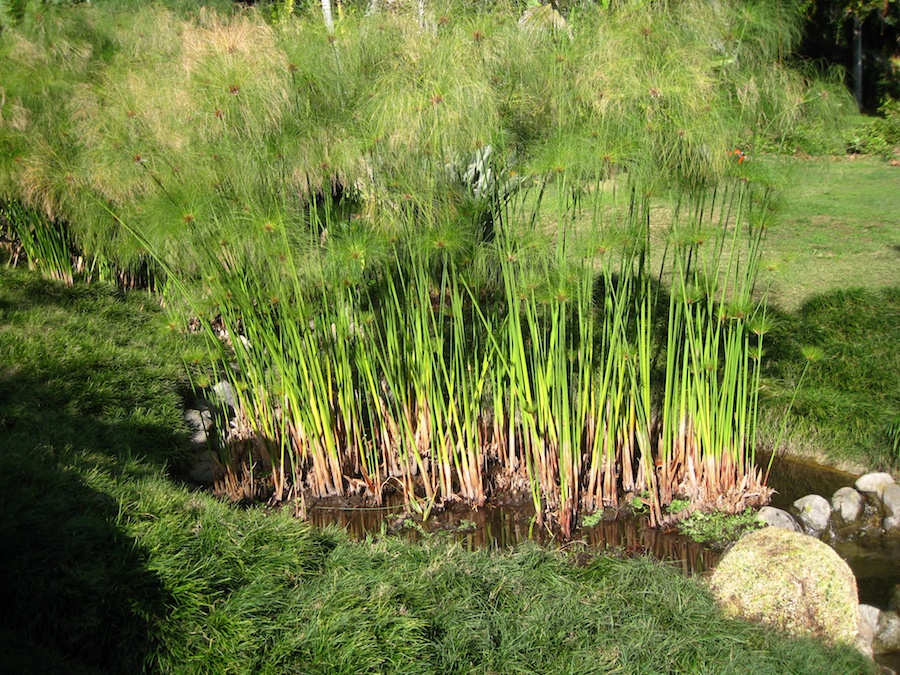
The Egyptians would like this
Did You Know? - Papyrus was first manufactured in Egypt and Southern Sudan as far back as the fourth millennium BCE.
The earliest archaeological evidence of papyrus was excavated in 2012-2013 at Wadi al-Jarf, an ancient Egyptian harbor located on the Red Sea coast. These documents date from ca. 2560-2550 BCE (end of the reign of Khufu).
In the first centuries BCE and CE, papyrus scrolls gained a rival as a writing surface in the form of parchment, which was prepared from animal skins.
Sheets of parchment were folded to form quires from which book-form codices were fashioned. Early Christian writers soon adopted the codex form, and in the Gr?co-Roman world, it became common to cut sheets from papyrus rolls to form codices.
Codices were an improvement on the papyrus scroll, as the papyrus was not pliable enough to fold without cracking and a long roll, or scroll, was required to create large-volume texts.
Papyrus had the advantage of being relatively cheap and easy to produce, but it was fragile and susceptible to both moisture and excessive dryness. Unless the papyrus was of perfect quality, the writing surface was irregular, and the range of media that could be used was also limited.

The cameras self-timer worked great!!!
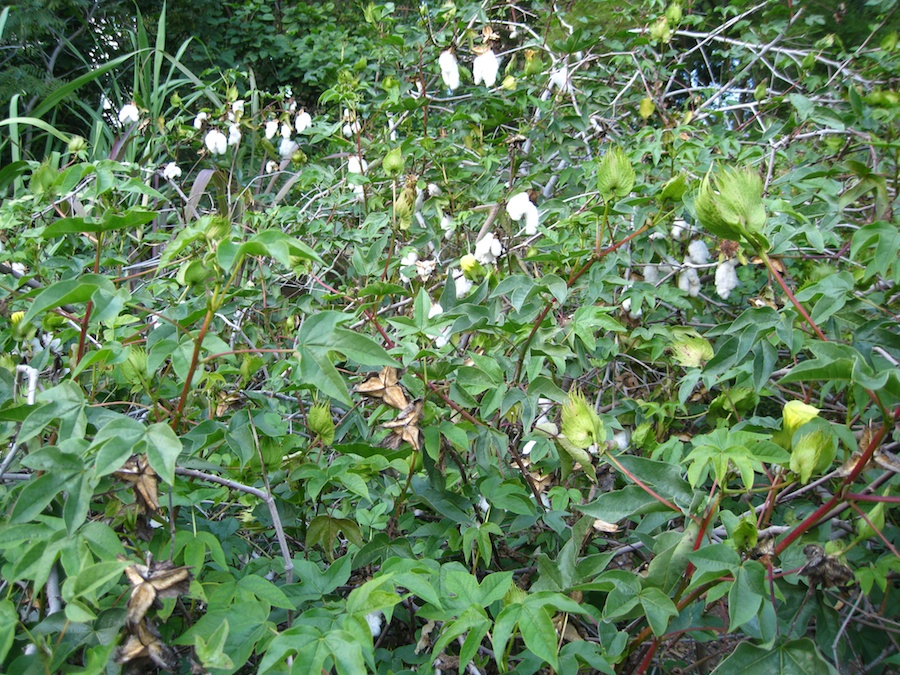
Tree Cotton???
Did You Know? - Gossypium is the cotton genus. It belongs to the tribe Gossypieae, in the mallow family, Malvaceae, native to the tropical and subtropical regions from both the Old and New World.
The genus Gossypium comprises around 50 species, making it the largest in species number in the tribe Gossypioieae. New species continue to be discovered. The name of the genus is derived from the Arabic word goz, which refers to a soft substance.
Cotton is the primary natural fibre used by modern humans. Cultivated cotton is also a major oilseed crop, as well as a main protein source for animal feed. Cotton plants thus have an enormous weight in the world economy and are of great importance for the agriculture, industry and trade of many tropical and subtropical countries in Africa, South America and Asia. Consequently, the genus Gossypium has long attracted the attention of scientists.
The origin of the genus Gossypium is dated to around 5-10 million years ago. Gossypium species are distributed in arid to semiarid regions of the tropics and subtropics. Generally shrubs or shrub-like plants, the species of this genus are extraordinarily diverse in morphology and adaptation, ranging from fire-adapted, herbaceous perennials in Australia to trees in Mexico.

Where is the cotton gin???
Entering The Japanese Garden

"Pa-Tuey... Lady, please remove your hand from my mouth"

The bamboo was growing... You could almost hear it
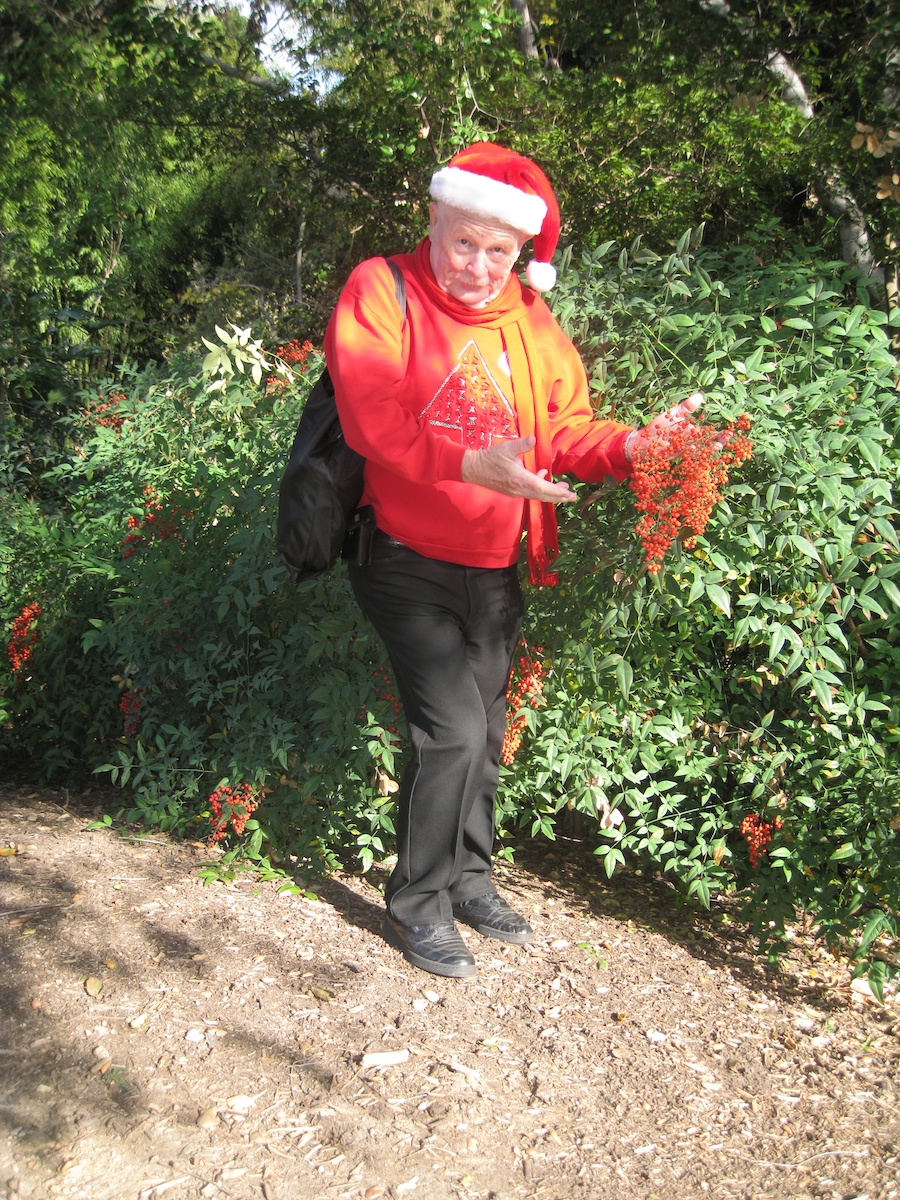
Paul picks some wild Christmas grapes.... Christmas wine anyone???

The Ginkgo trees were magnificent
Did You Know? - Ginkgos are large trees, normally reaching a height of 20?35 m (66?115 feet), with some specimens in China being over 50 m (164 feet). The tree has an angular crown and long, somewhat erratic branches, and is usually deep rooted and resistant to wind and snow damage. Young trees are often tall and slender, and sparsely branched; the crown becomes broader as the tree ages.
During autumn, the leaves turn a bright yellow, then fall, sometimes within a short space of time (one to 15 days). A combination of resistance to disease, insect-resistant wood and the ability to form aerial roots and sprouts makes ginkgos long-lived, with some specimens claimed to be more than 2,500 years old.

We did not know that Dwarfs liked pomegranates!

The gingko trees stood out in most photos of the Japanese Gardens

Sue rubs the rocks

Good luck

A crisp fall day in the garden
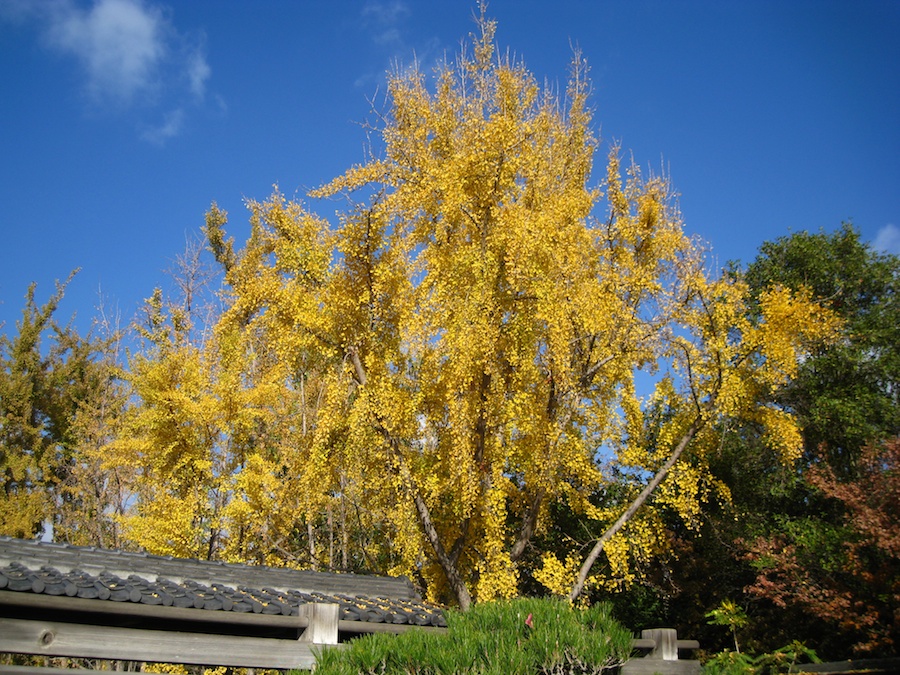
Just beautiful... At our next visit the trees will be bare

Pyracantha? Guess you bonsai anything?
Did You Know? - Pyracantha berries are mildly poisonous as they contain Cyanogenic glycosides and can cause mild gastro-intestinal problems; they are edible only when crushed and washed under running water. They have been made into jelly.
The berries of the Firethorn ? high in Vitamin C ?? are actually pommes, which is a fleshy fruit with seeds at the core, like apples. They are greatly favored by Black Birds and Cedar Waxwings, which have been know to strip a tree of all its berries. To the human pallet, the berries are soft and mealy ? like an apple that should have been eaten last week ? of mild flavor and many seeds. The seeds are shaped like tiny angular Brazil nuts. Some report the berries are bitter, but that has not been my experience.
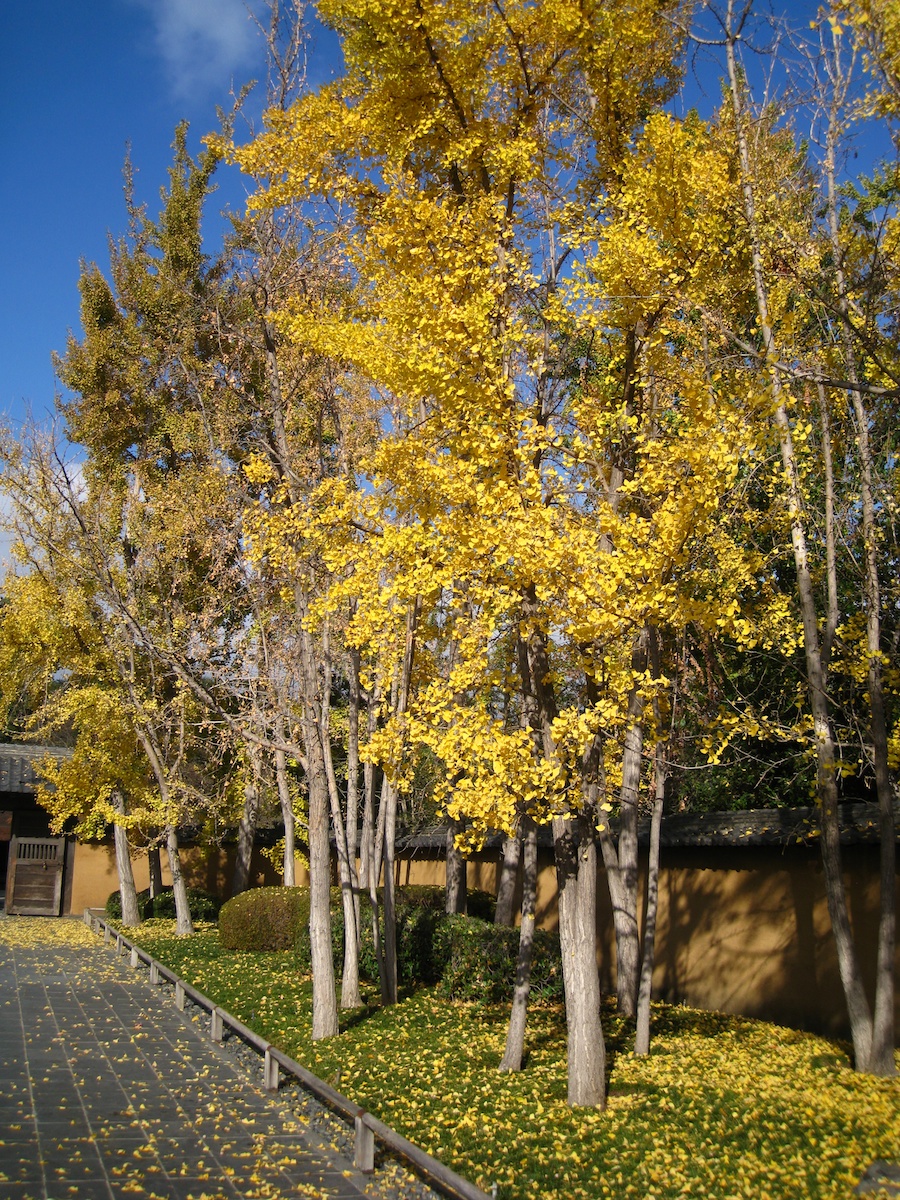
Did we say yellow???

They make the grounds look quite pretty
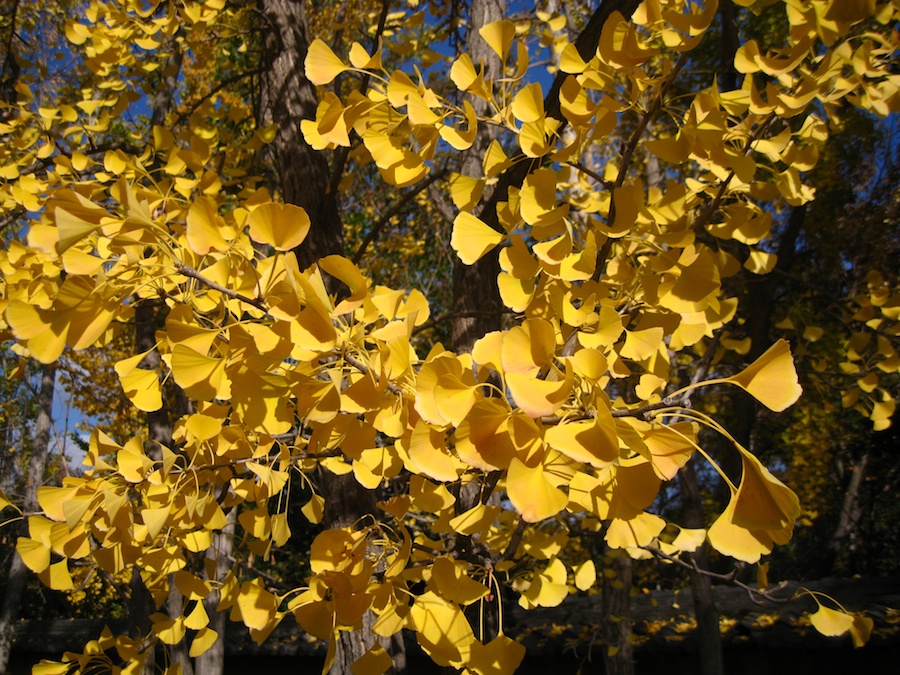
Up close and personal

We are off in a cloud of dust to the Tea Room

A quick pause for beautiful leaves

Mother nature is amazing

Camellias are looking good
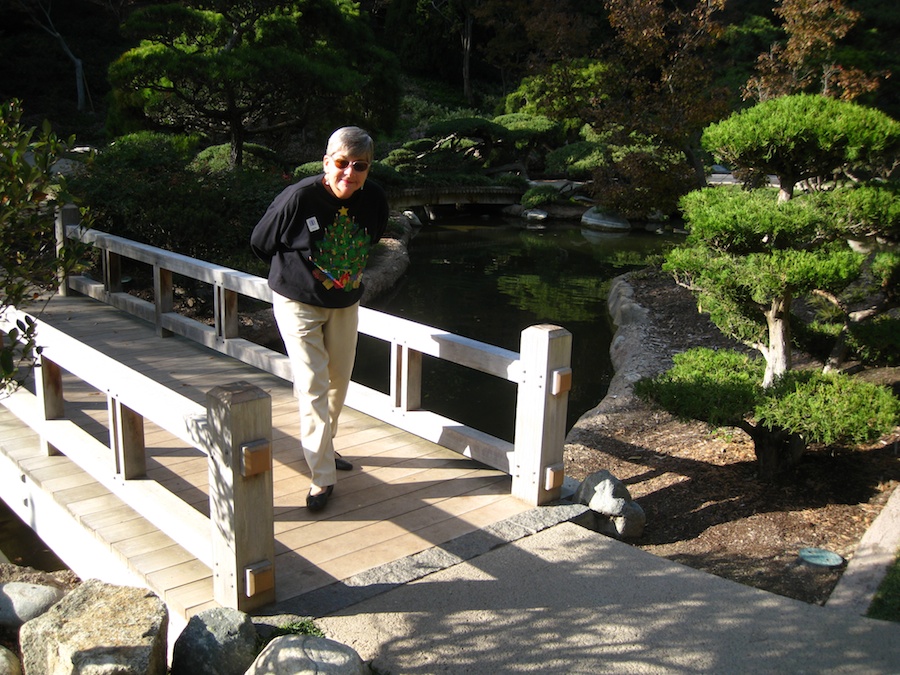
Sue talks to the Koi... And they follow her

The arbor is looking fantastic
The Tea Room Is Next

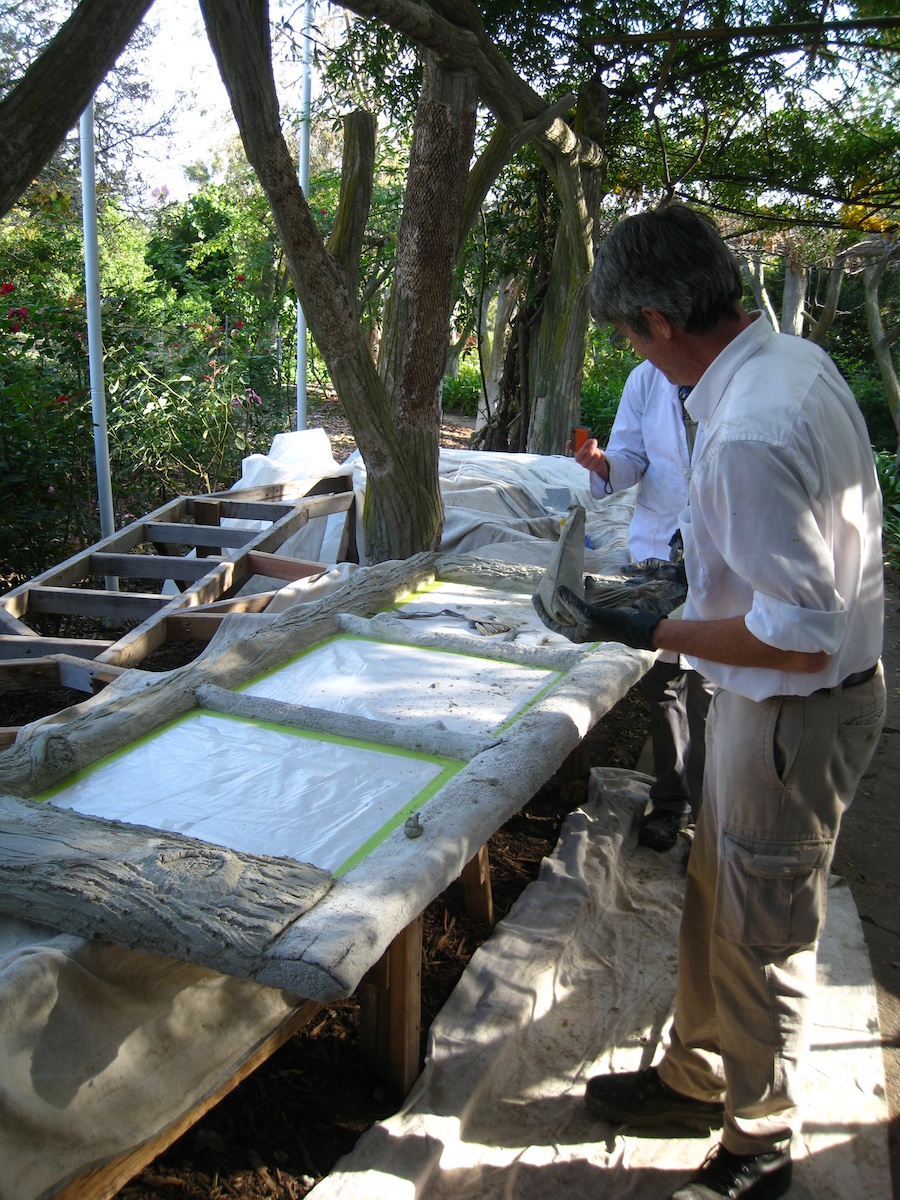
The door is begin decorated for the staff Christmas party

It better win first prize

The rose garden was in pretty good shape for December
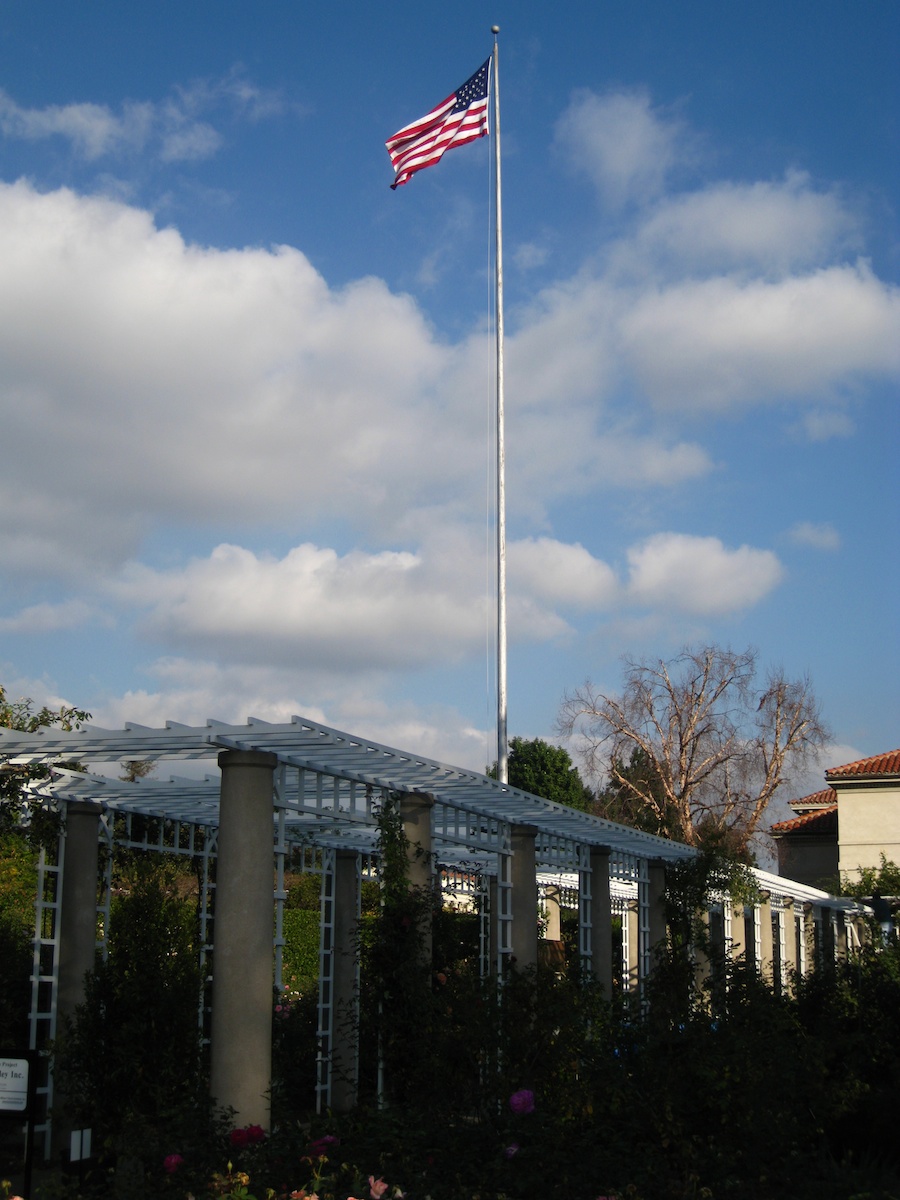
Long may she wave in spite of the terrible "leadership" she is struggling under now

She will survive
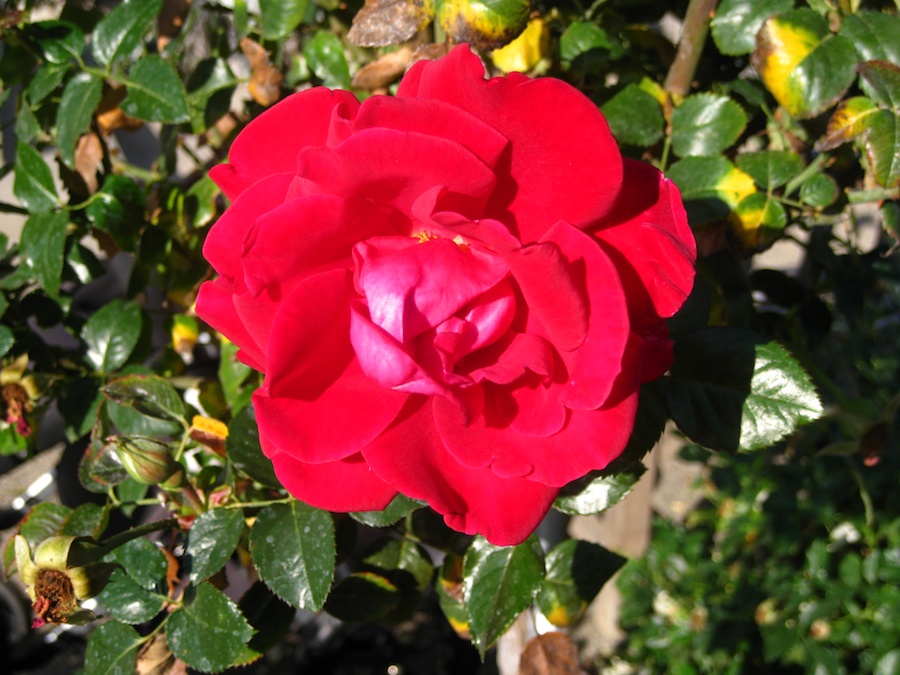
Roses are red... Indeed

The herb harden was in great shape
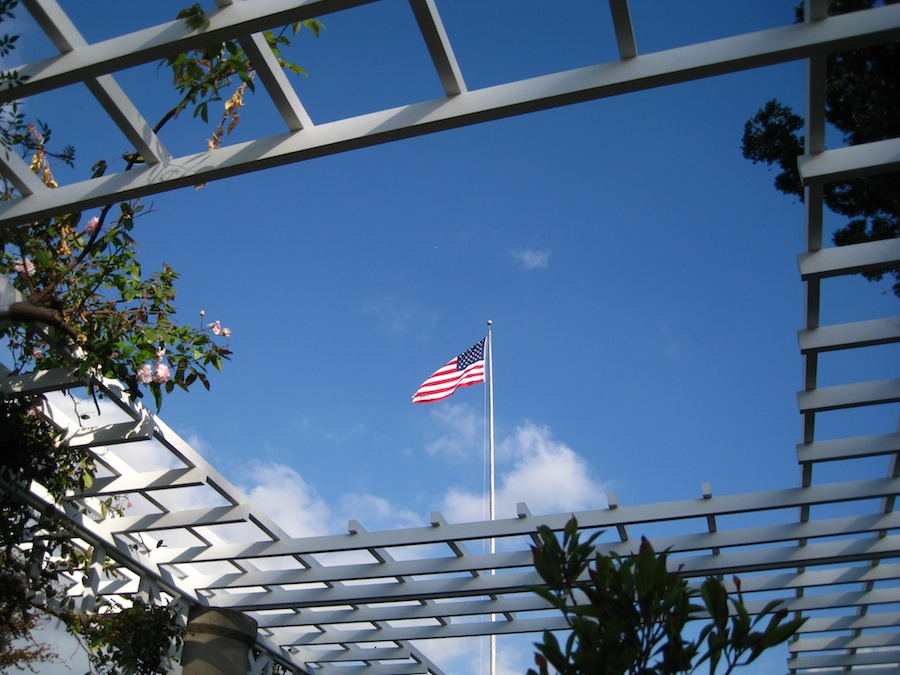
Framed... The new arbors look fantastic.... Lots of work to replace them
At The Tea Room

A 2:15 appointment

Tea and champagne... Yes

Santa must have hat on
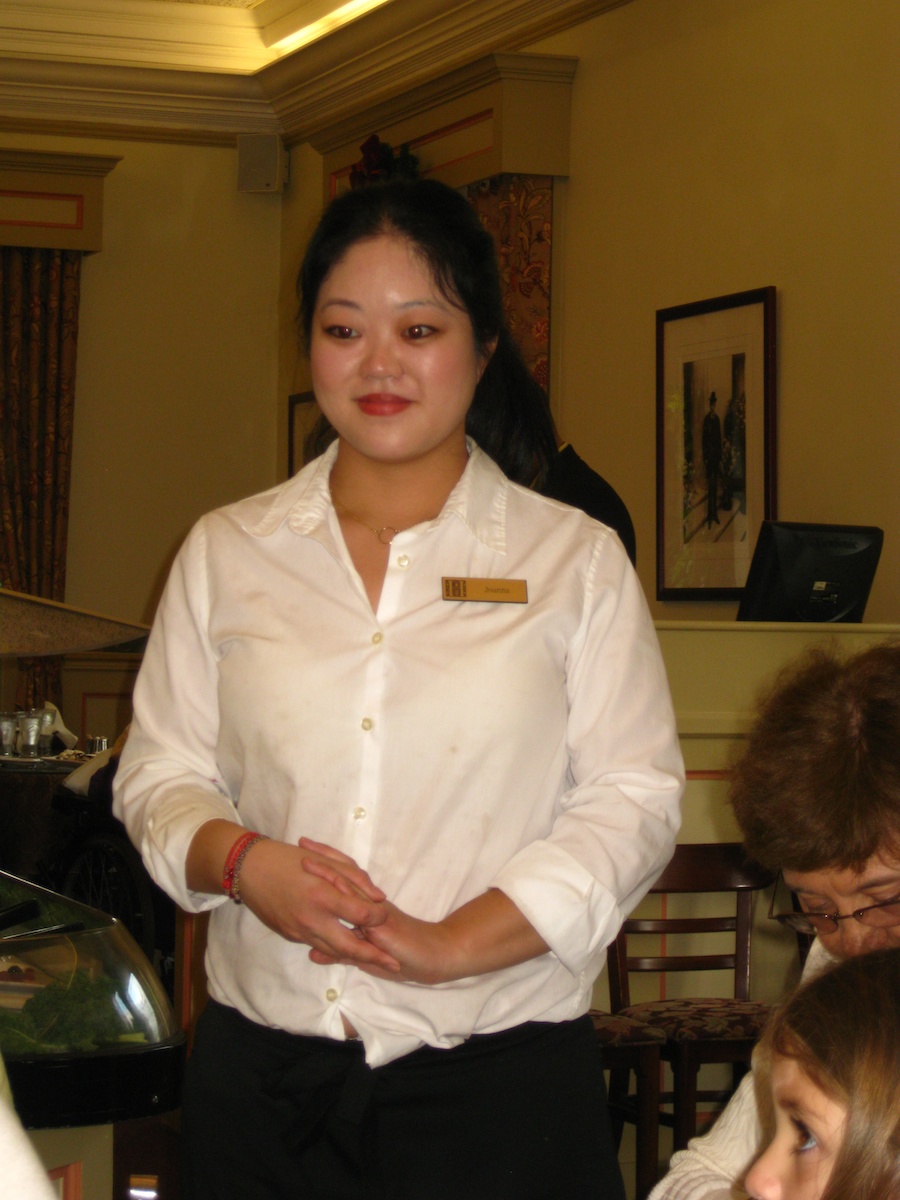
Joanna was delightful... As always and she got us right in and seated quickly
We have known her for many years plus Sue got her favorite chocolate-chip scones

The house was about 30" tall

Trisket walls, necco-wafer chimney, chocolate roof

Someone had fun with this
Do You Remember? - "Hansel and Gretel" is a well-known fairy tale of German origin, recorded by the Brothers Grimm and published in 1812. Hansel and Gretel are a young brother and sister threatened by a cannibalistic witch living deep in the forest in a house constructed of cake and confectionery. The two children save their lives by outwitting her.
The fairy tale may have originated in the medieval period of the Great Famine (1315?1321), which caused people to do some desperate deeds like abandoning young children to fend for themselves, or even resorting to cannibalism.

We waddled out
stuffed to the gills with a great lunch
To The Herb (Kitchen) Garden

Everything is well organized in this garden

The yellow was very bright

Baby oranges... Looks like grapes
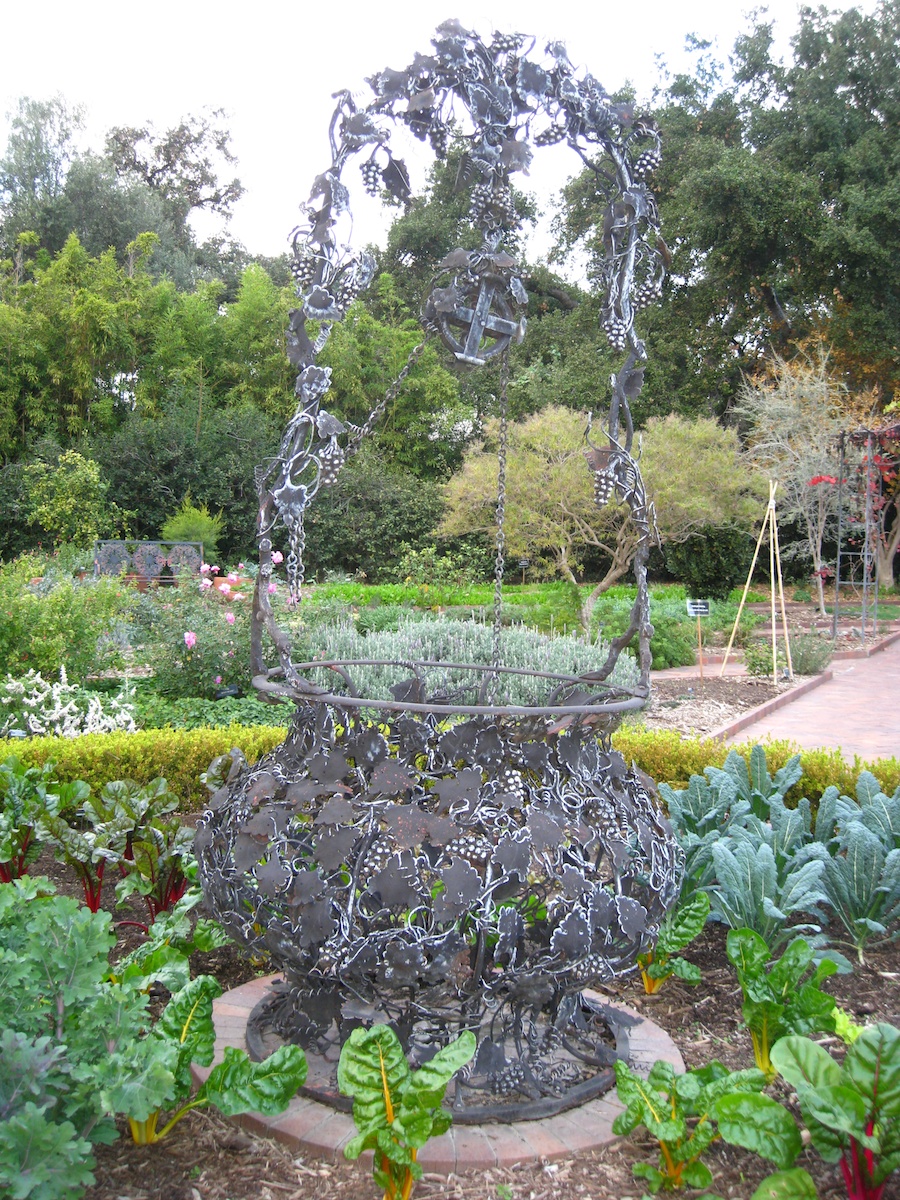
The grape arbor was cut back and chard and
artichokes were planed around the bottom
To The Chinese Garden

New construction is coming right along
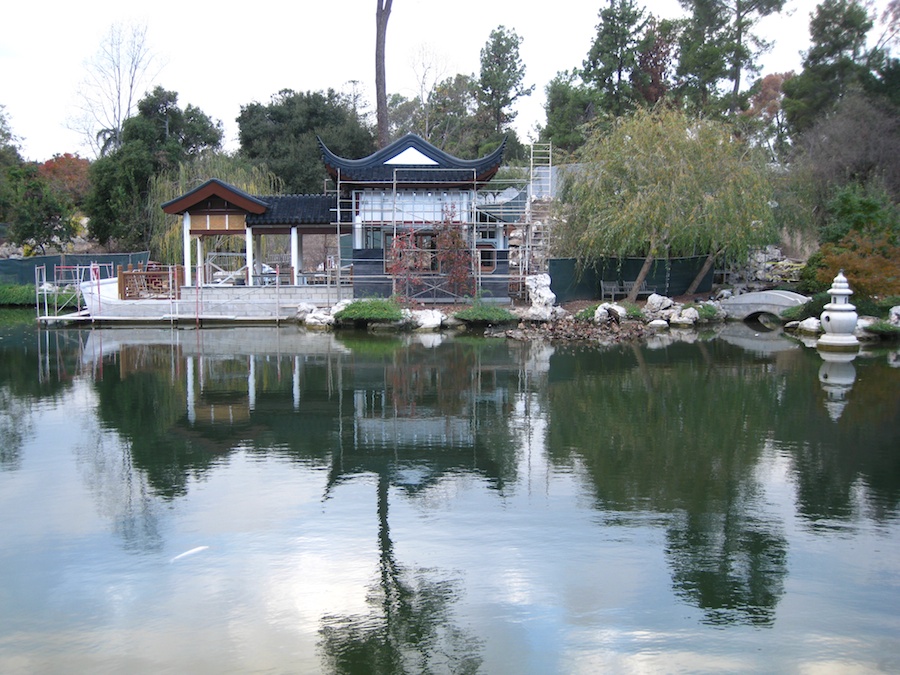
The reflections were good today... Not much in the way of wind
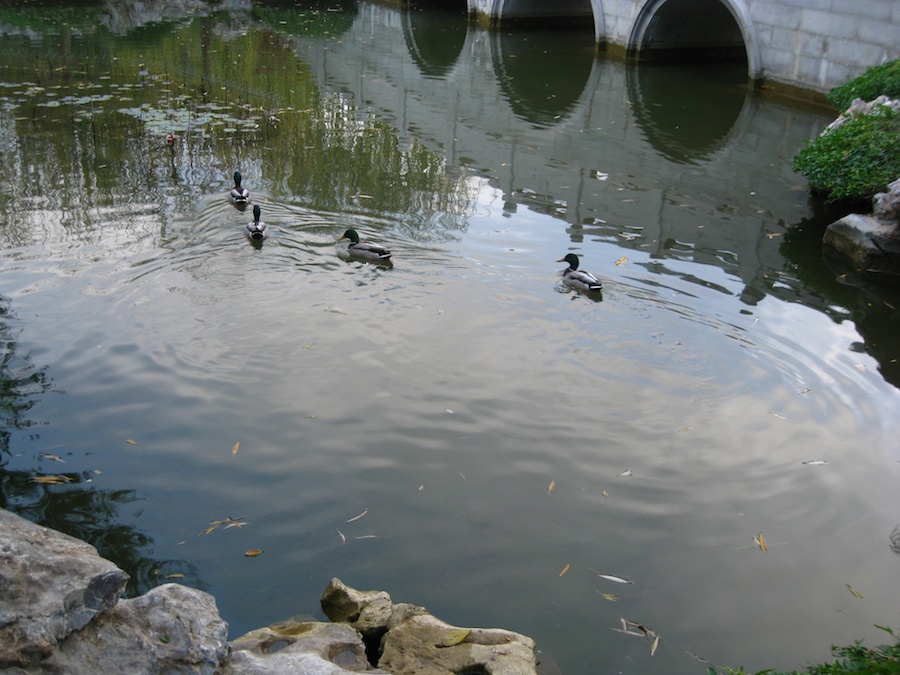
Sue talked to the Ducks....
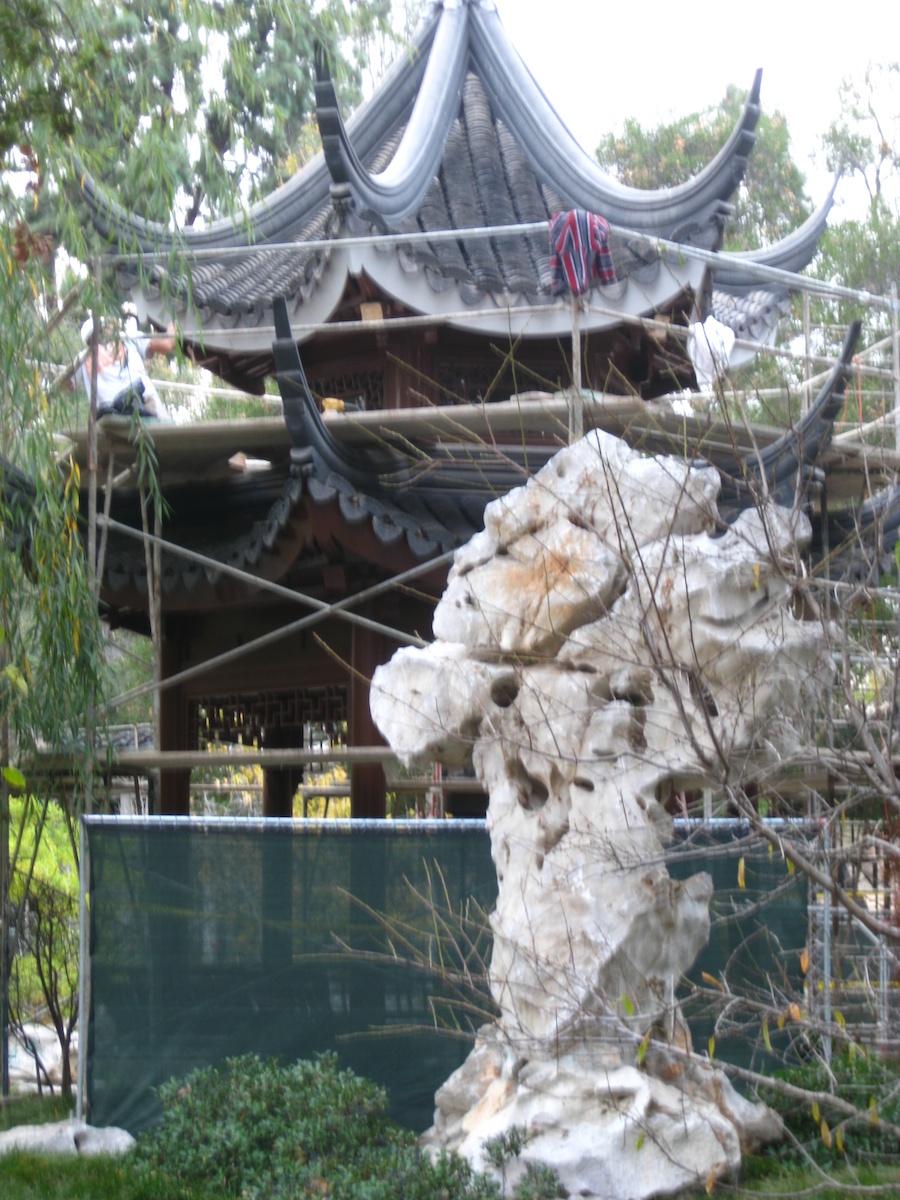
Can you spot the man working of the roof of the building??
A Visit To The Bazaar Before We Hop The Freeway

Through these gates go brave shoppers

One more glass of champagne
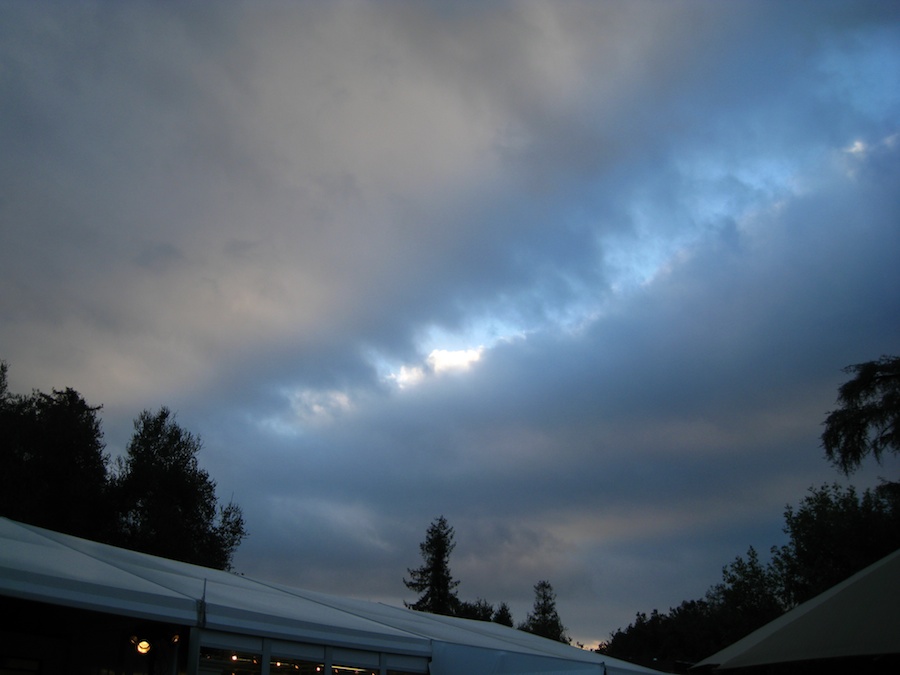
It's getting late... Time to return home